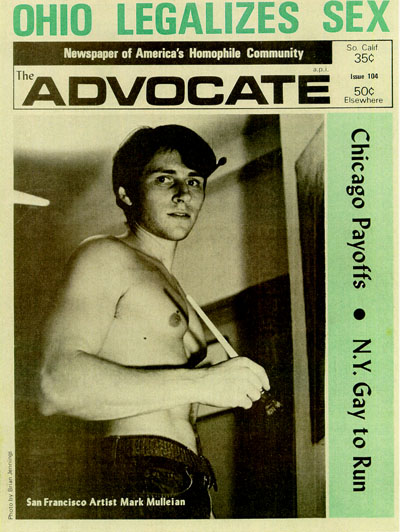|
 |
|
|
|
|
|
|
|
|
|
|
|
|
Stonewall
March |
|
|
|
|
|
|
In
1971 there was the birth of a movement that would take the form of a protest
march in the streets of New York and San Francisco. This event, known as the
Stonewall March, was the first national declaration of gay solidarity and protest
against a long history of civil discrimination and police brutality toward gays.
This march would help open the doors for future protest marches, catapulting
gay celebration of identity and solidarity from protest to pride in the years
to come. The marches that would follow we've come to know as "The Gay Pride
Parade". |
|
|
|
|
|
The
first San Francisco gay march took place on June 27, 1970. Called the Stonewall
March, this first large scale gay liberation protest in San Francisco was an
apparently spontaneous event, but was organized by a relatively small group
of gay men calling themselves the San Francisco Gay Celebration Front who took
to the streets with no assurances that their protest would not lead to police
arrests, public ridicule, and/or certain violence. Mark Mulleian and his lover
Ron Raz joined and helped lead this gay protest march that started as a group
of nearly sixty participants and was led by a vanguard of thirty cross-dressing
“hair fairies”. The march grew rapidly to as much as two to three
thousand people progressing down Polk Street to City Hall, as a flood of spectators
gradually lined the sidewalks to watch. The
March from Aquatic Park |
|
|
|
|
down Polk Street to Civic Center was in commemoration of the first anniversary
of the Stonewall Riots in 1969. These anniversary events, also held in Los Angeles,
New York and Chicago on the same day, effectively established the Stonewall
Rebellion as the beginning of the modern gay movement. |
|
|
|
As
they shouted "Out of the closet and into the streets!”, Mulleian and
his partner Ron Raz, along with a small group of protesters, headed off the
first officially recognized gay march, “Gay Freedom Day” on June 25,1972
calling it “Christopher Street West,” organized by gay activist Rev.
Ray Broshears, H.L. Perry, and Rev. Bob Humphries. Mayor Joseph Alioto refused
to participate, but Police Chief Richard Hongisto was the first politician to
officially join the march down the original parade route from Montgomery and
Pine to Polk Street. There was no organized gay march in San Francisco in 1971.
This first official parade attracted an estimated 50,000 people and set off
what would become the largest gay pride celebration to date in the United States,
attracting over 200,000 people by 1977. Eventually this would lead to the largest
LGBT march in U.S. history in 1978 numbering 350,000, as well as the largest
parade in San Francisco’s history up to that time. Through the 1970s, the
protest marches would grow and eventually come to be known as the Gay Freedom
Parade. |
|
|
By
the 1980s, there was a major cultural shift in the Stonewall Riot commemorations.
The previous loosely organized, grassroots marches and parades were taken over
by more organized and less radical elements of the gay community. Remove the
words "Liberation" and "Freedom" from their names, replacing
it with Gay Pride by 1994, now known as the Gay Pride Parade. The 1970 Stonewall
march and the Christopher Street West march, Gay Freedom Day, were the two marches
that became so significant historically and would change America forever. Nearly
all of the early original marchers of the 70’s are now dead from AIDS.
Mulleian marched his last march in 1975. |
|
|
|
|
 |
|
|
|
|
|
|
 |
 |
 |
 |
 |
 |
 |
 |
 |
 |
 |
 |
